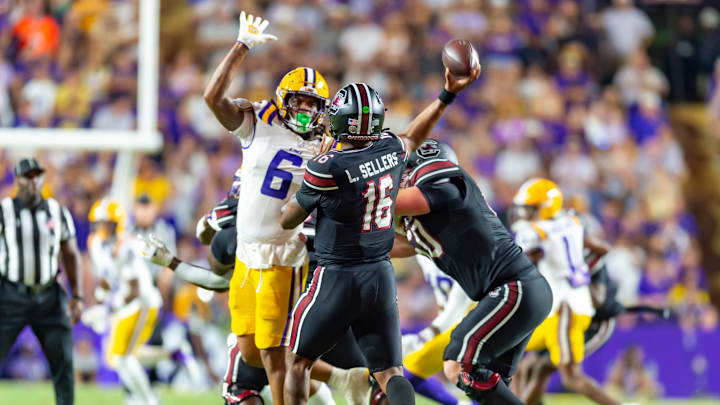LSU didn't wait until December to start over. After a blowout 49-25 loss to Texas A&M, the Tigers fired head coach Brian Kelly and offensive coordinator Joe Sloan within 24 hours. Together, they had guided LSU's offense to mediocrity, 25.8 points per game, 355.5 yards per contest, and dead last in the SEC in rushing. The message from Baton Rouge was clear that accountability starts at the top. And they stood on it.
Meanwhile, in Columbia, Mike Shula's offense has produced even worse results, yet the silence from South Carolina is deafening. The Gamecocks are last in the SEC and 127th nationally in total offense, averaging just 302.1 yards per game, their lowest output since last century.
If LSU can justify cleaning house with those numbers, South Carolina's reluctance to act looks less like patience and more like paralysis.
Offensive Comparison through Week 9:
(Joe Sloan, LSU vs. Mike Shula, South Carolina)
Points per Game
LSU ████████████████ 25.8
SC ████████████ 20.4
Total Yards per Game
LSU ████████████████████ 355.5
SC █████████████████ 302.1
Passing Yards per Game
LSU █████████████████ 249.3
SC █████████████ 195.0
Rushing Yards per Game
LSU ████████ 106.3
SC ████████ 107.1
Third Down %
LSU ██████████████ 38.6%
SC ████████████ 33.6%
Total Touchdowns
LSU █████████████ 23
SC ███████████ 20
Sacks Allowed (fewer is better)
LSU ████████ 16 (-129 yds)
SC ███████████████ 28 (-251 yds)
Both teams have struggled on the offense this season, but LSU's administration refused to normalize it. South Carolina, on the other hand, continues to ask fans to "trust the process" while fielding an offense that is breaking all the wrong kinds of records.
Beamer’s Dilemma
To be clear, however, Shane Beamer's situation is not identical to Brian Kelly's. Beamer has built genuine culture momentum in Columbia and recruited well enough to warrant optimism about the program's future. But culture can't outrun production forever.
Mike Shula's offensive scheme carries the imprint of his NFL background, built for veteran pocket quarterbacks and big offensive lines, rather than the RPO-heavy, tempo-driven offenses that prevail in today's SEC. That framework appears to risk neutralizing LaNorris Sellers' mobility, relegating Nyck Harbor into a decoy, and reducing an explosive roster into checkdowns and inside-zone hand-offs.
At some point, loyalty becomes liability.
Accountability: Baton Rouge vs. Columbia
LSU's decision wasn't just about the play-calling, it was about standards in Death Valley. Firing both the head coach and offensive coordinator sent a message that mediocracy will not be tolerated, even from millio-dollar men.
In Columbia, that same urgency seems to be missing. South Carolina fans are watching the same film every week, the same film that Beamer said would make them sick to rewatch. Stalled drives, wasted possessions, and conservative play-calling that kills rhythm. When an offense ranks last in the SEC in total yards, third-down conversions, and red-zone scoring, "stability" starts to look a lot like avoidance.
Beamer's belief in Shula is admirable, no doubt. But it's also isolating him from a fanbase that is running out of patience.
The Question That Won’t Go Away
LSU hit the reset button on its offensive future in one day, and before November. South Carolina could follow suit. At 3-5 and trending downward with big matchups looming, the Gamecocks have little left to lose and everthing to gain by exploring a new offensive direction. They certainly have nothing to lose.
Because the truth is simple: if LSU can fire its head coach and offensive coordinator with slightly better offensive numbers than South Carolina's there's no reason that Columbia should settle for less. If accountability matters in Baton Rouge, it should matter in Columbia, too.
